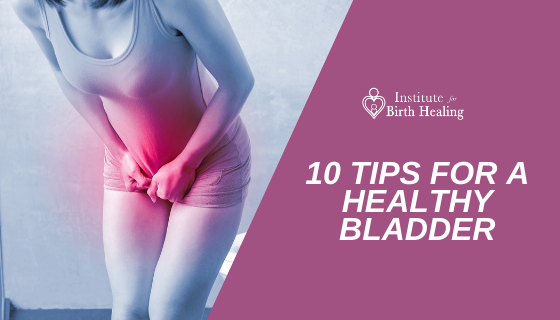10 Tips for a Healthy Bladder
10 Tips for a Healthy Bladder
Do you ever remember learning anything about your bladder and how it works? Do you know how a normal, healthy bladder works? Here are 10 tips to help you have a healthy, strong bladder.
- What color is your urine? Ideally a light, pale yellow to clear color is the goal. Any darker color means your urine is more concentrated and can irritate the bladder making you have to urinate more frequently. You need to be drinking more water. It is recommended that you drink half of your body weight in ounces. A 150 pound person should be consuming 75 ounces of water a day.
- Are you urinating more than 6-8 times a day? The average bladder holds about 2 cups of urine before it needs to be emptied. Normally you should urinate every 2-3 hours. As we get older, our bladder capacity can get smaller and we may need to pass urine more frequently but usually not more than every 2 hours.
- Take your time when you empty your bladder. Don’t push or strain to force out the urine. Urine should flow easily without discomfort in a good, steady stream until the bladder is empty. Make sure you empty your bladder completely each time you pass urine. Do not rush the process.
- Avoid going to the toilet “just in case” or more often than every 2 hours. It is usually not necessary to go when you feel the first urge. Try to go only when your bladder is full. Urgency and frequency of urination can be improved by retraining the bladder and in some cases with manual therapy by an experienced physical therapist. Also spacing your fluid intake throughout the day can help. Don’t let your bladder control your life.
- Don’t wait too long to urinate either. Waiting more than 4 hours between toileting or urinating too infrequently may be convenient but not healthy for your bladder.
- Limit the amount of caffeine (coffee, cola, chocolate or tea) and citrus foods you consume as these foods can be associated with increased sensation of having to urinate.
- Limit the amount of alcohol you drink. Alcohol increases urine production and also makes it difficult for the brain to coordinate bladder control.
- Avoid constipation by maintaining a balanced diet of dietary fiber.
- Perform regular exercises of the pelvic floor to keep normal bladder control. Most people think of Kegels as the answer to all issues in the pelvis but actually having strong gluteal (think butt) muscles is just as important. The best way to strengthen your pelvic floor is in a squatting position, keeping your butt sticking out back and not curved under, and THEN perform a Kegel or pelvic floor contraction.
- Keep your lower abdominal muscles strong too. Your transverse abdominal muscles along with the pelvic floor muscles help to support your bladder. Learning how to use these muscles together in various activities is very helpful in keeping your bladder in its proper place.

